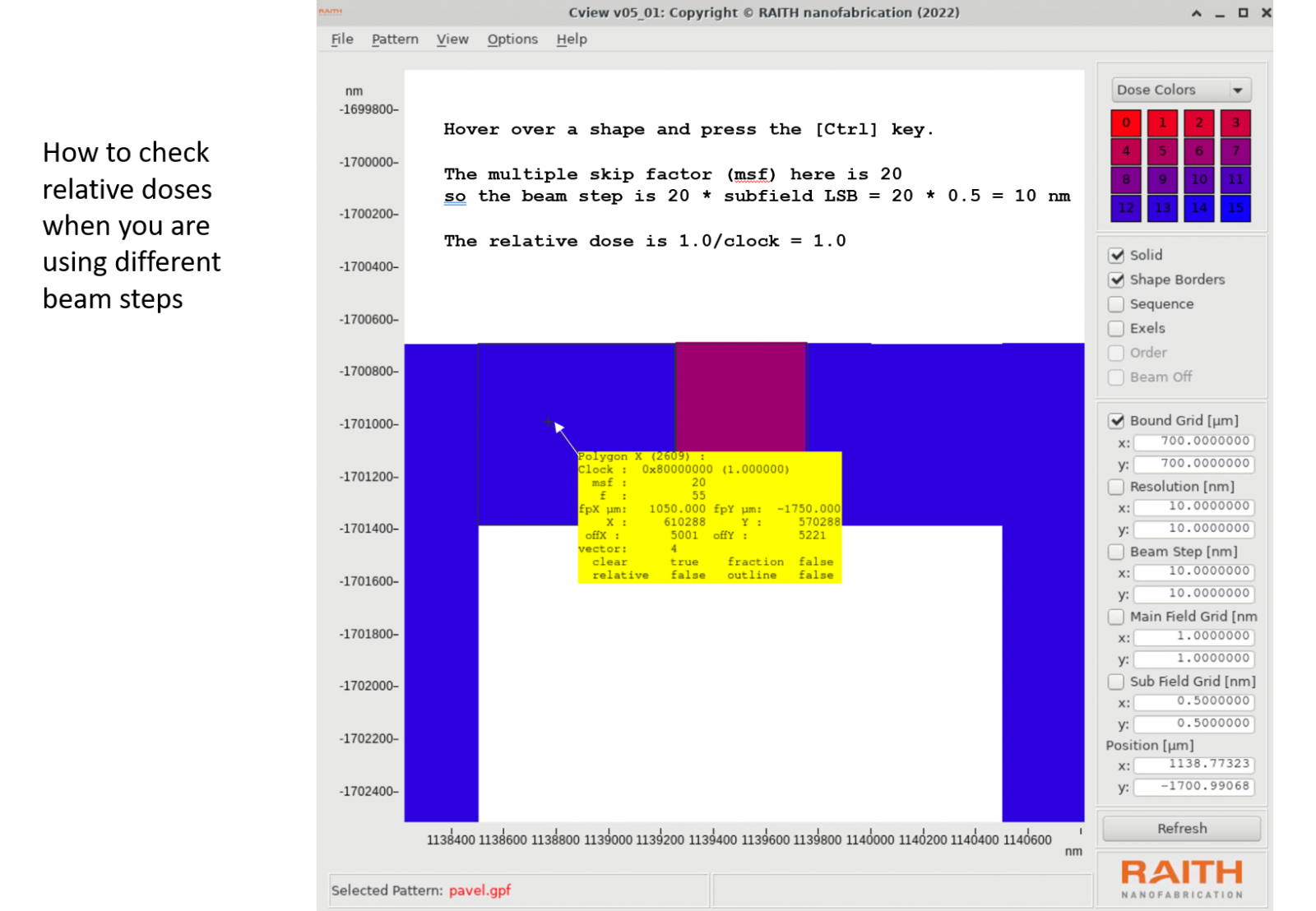Using different beam steps in the same gpf file
Normally these tips are brimming with trivia about making optical waveguides, so in case the quantum computing folks are feeling unloved, this tip is just for you freaks making tunnel junctions.
Several ways of making junctions require patches of very low dose, used to increase the undercut in a layer of P(MMA-MAA). These "ghost" shapes must be included in the same pattern file as the high dose features, so these are the shapes that severely limit your exposure current.
Why not use a larger beam step size for the ghost shapes, while leaving the rest of the pattern with a small step? Beamer does not let you mix different beam steps in the same gpf file, but now you can -- with Freebeam! (our in-house pattern conversion program.)
The ebpg's low-level pattern format has always allowed mixed beam steps, but it's very difficult to tweak the gpf files by hand. Here is how to do it the easy way:
First, set up a conversion script by editing a copy of /public/freebeam_example.sh. Edit the script file to suit your pattern. You know how to run a script file of course.
In your copy of the script, set bss to the step size you want for the non-ghost features. (Should we call them living?) Then define a dose assignment file as in the example /public/example_doses.txt. This will look a lot like a FDA table in Beamer. The format is simply
layer datatype relative_dose [beam_step]
where the optional beam_step must be a multiple of the parameter "bss" from the script. For example, if the normal beam step size is 10nm, then you could set the bss for layer 3 to 20nm. Now your exposure can run four times faster!
Of course you need to check the pattern using cview. Pulling out the relative dose is a little more work:


Bonus tip
Freebeam also has a built-in field sorting feature, so you can sort a pattern according to a path. It's the same as "gpfsort -path" but a lot faster.